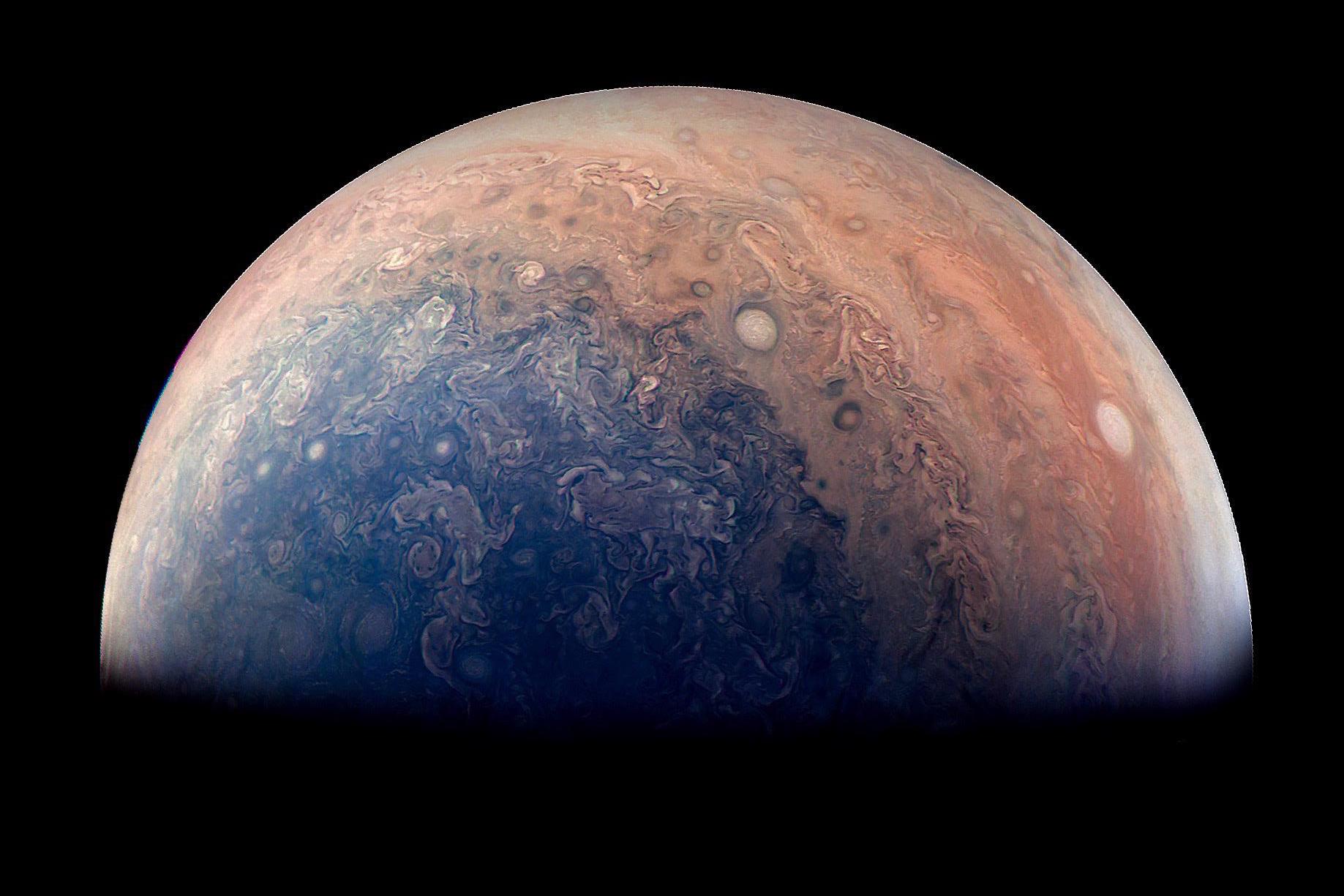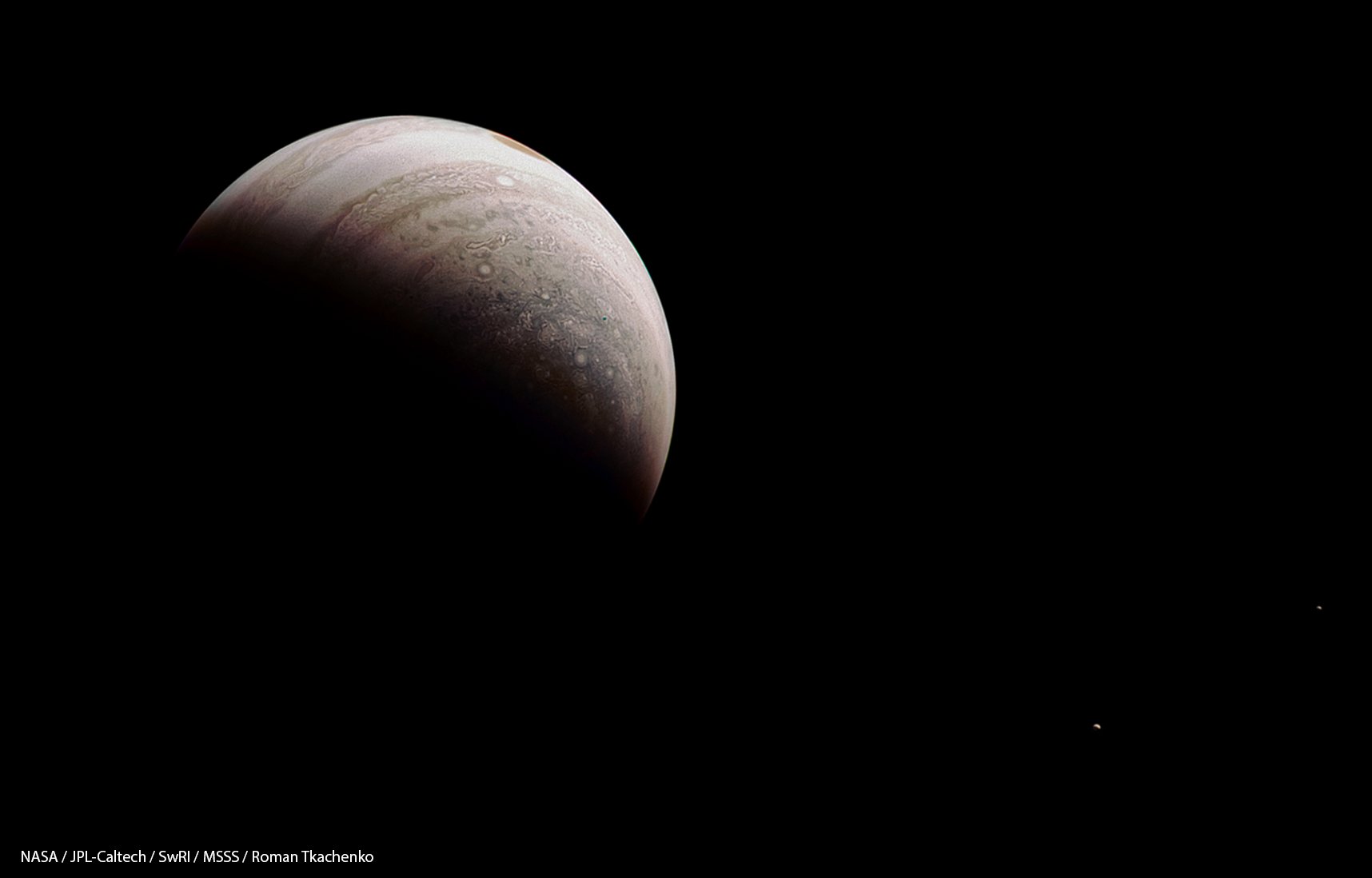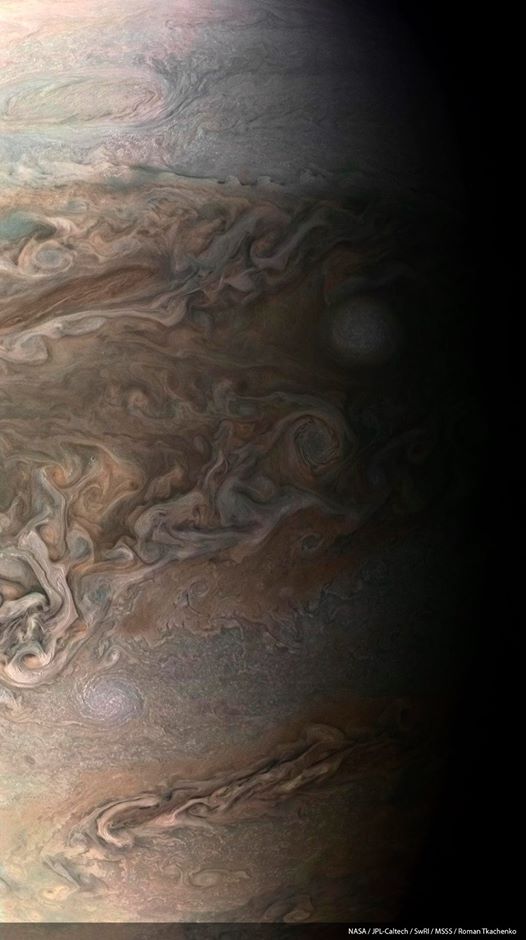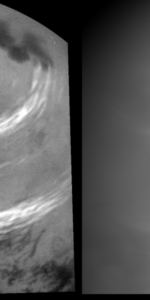
There has been a lot of attention given to the Cassini mission at Saturn lately, but meanwhile, NASA’s Juno probe also continues to be busy studying the largest planet in the Solar System, Jupiter. Juno is now revealing more of the giant planet’s secrets, and the first science results have now been published, which were presented last week at the European Geosciences Union meeting. As is common in planetary science, the new findings include significant surprises.
As it turns out, Jupiter’s interior seems to be rather different from what had been expected. Being a gas giant, Jupiter doesn’t have a surface as such below the atmosphere, it just gets progressively denser the farther down you go until you reach (as thought) a small, solid core.
“The whole inside of Jupiter is just working differently than our models expected,” said mission principal investigator Scott Bolton of the Southwest Research Institute in Texas.

Previous models of Jupiter’s interior had been based on gravitational measurements of the planet, but the new findings appear to suggest something different. Jupiter’s interior, beneath the deep and turbulent atmosphere, was thought to be fairly uniform, with a shallow outer layer of liquid hydrogen overlying a thinner layer. In that thinner layer, it would “rain” helium. Farther down was a deeper layer of metallic hydrogen, and finally a smaller solid core, about 43,000 miles (70,000 kilometers) down. But now it seems, from Juno’s data, that those layers are not as uniform as previously thought.
“Jupiter’s molecular envelope is not uniform,” said Tristan Guillot of the University of the Cote d’Azur in France. “We assumed we could treat the envelope as global, but now, with the finer data, it appears less regular.”
Instead of a solid core, the data suggests that Jupiter has a more “fuzzy” core, which is dilutely mingled with the overlying metallic hydrogen layer. In short, Jupiter’s interior is more complex that first thought, which is an exciting find for scientists who want to understand how larger gas planets form and evolve.
The surprises also include the atmosphere as well. It’s been known for a long time that Jupiter has ammonia clouds, but Juno found that there is a dense, deep zone of ammonia gas around the equator, something not expected. Another parts of the atmosphere, ammonia is depleted, which is evidence for amonnia-based weather systems on Jupiter.
“We’ve known there’s a spike at the equator, but the new microwave data is showing that the spike goes way, way down into the abyss, 300 kilometres below the cloud,” said Leigh Fletcher of the University of Leicester, UK. “It suggests ammonia is being distributed by a weather system that penetrates much deeper than anyone expected.”
The new findings also extend beyond the planet itself as it were, with the discovery that Jupiter’s magnetic field is stronger and more irregular than first thought. The strength of the magnetic field was previously estimated to be about 5 gauss (compared to 0.25 to 0.65 gauss for Earth), but Juno found it to be possibly as high as 8-9 gauss. The dynamo which drives the magnetic field is now thought to be closer to the surface than expected.


“I didn’t expect all the theories to be wrong, but there’s motion going on in the planet we did not anticipate,” Bolton said.
“Jupiter’s magnetic field is spatially complex, and there were deficits of up to 2 gauss elsewhere,” noted Connerney. “We may need many more orbits to resolve this.”
In March, Juno completed its fifth close flyby of Jupiter. Closest approach occurred on Monday, March 27, at 1:52 a.m. PDT (4:52 a.m. EDT, 8:52 UTC). All of the spacecraft’s science instruments were operating during the flyby; scientists now have even more data to go through from the mission so far.
As mentioned by Bolton last February, “This will be our fourth science pass – the fifth close flyby of Jupiter of the mission – and we are excited to see what new discoveries Juno will reveal. Every time we get near Jupiter’s cloud tops, we learn new insights that help us understand this amazing giant planet.”



Juno has also found previously unseen swirling cyclones in Jupiter’s atmosphere, similar to cyclones on Earth, but much larger.
As Glenn Orton of the Jet Propulsion Laboratory in Pasadena, California told New Scientist, “They’re the size of Earth, or maybe half an Earth. They’re probably composed of condensed ammonia.”
Juno has also seen other white ovals, in the cloud belts south of Jupiter’s equator. Their composition isn’t known for certain yet, but according to Alberto Adriani of the Institute for Space Astrophysics and Planetology in Rome, Italy, they likely contain ammonia and hydrazine. On Earth, hydrazine is used in rocket fuel.
As well as the atmosphere, Juno has also been studying Jupiter’s auroras. These are again similar to what we see on Earth, but more intense. The regions at the poles where they occur are composed mostly of methane and an ion containing three hydrogen atoms (H3+), at temperatures ranging from 500 to 950 kelvin.

And of course there are the images. Juno has been taking the highest-resolution images of Jupiter during its mission, including of the polar regions. They can often look like works of art – the clouds, storms and eddies in the atmosphere appearing like they were painted by a cosmic hand. Jupiter’s visible atmosphere is extremely turbulent, but that just adds to its beauty. The camera itself has also proven to be more resilient than anticipated, despite being hit by Jupiter’s radiation on an on-going basis.
“The good news is radiation damage so far is almost negligible, so it will operate for many years,” Orton said.
Last February, it was announced that Juno would remain in the same orbit for the remainder of its mission, due to a problem with the main engine. This doesn’t adversely affect the health of the spacecraft, but it means that Juno won’t be able to orbit even closer to Jupiter. The orbit it’s in right now is an elongated 56-day orbit. Juno was supposed to then switch to a closer, 14-day orbit, but the engine problem meant that the new orbit might be less than desirable, so it was decided by the mission team that the spacecraft would remain in the same orbit it is in now, for the rest of the mission. That won’t affect the science obtained too much however. It also means that the spacecraft will be subjected to less radiation overall, another plus.
“Another key advantage of the longer orbit is that Juno will spend less time within the strong radiation belts on each orbit,” said Bolton. “This is significant because radiation has been the main life-limiting factor for Juno.”

“Juno is providing spectacular results, and we are rewriting our ideas of how giant planets work,” said Bolton. “The science will be just as spectacular as with our original plan.”
Apart from Juno, the Hubble Space Telescope also recently took some breathtaking new images of Jupiter, showing the well-known distinctive dark bands and the Great Red Spot. Hubble is able to see features as small as 80 miles (130 kilometers) across in Jupiter’s atmosphere.
Juno’s next closest approach to Jupiter, the sixth flyby, will be on May 19, which will include flying over the Great Red Spot, the most well-known feature on Jupiter. This will be a chance to study the massive and long-lived storm in more detail than ever before.
“It means that for the first time, we can go down deep and find out what’s going on underneath,” Fletcher said.
More information about the Juno mission is available on its NASA website. Raw images are available here.
Be sure to “LIKE” AmericaSpace on Facebook and follow us on Instagram & Twitter!






“…we did not anticipate” will be the continuing catch phrase as we learn more about Jupiter and the other planets and moons in our solar system. Stunning images as well!